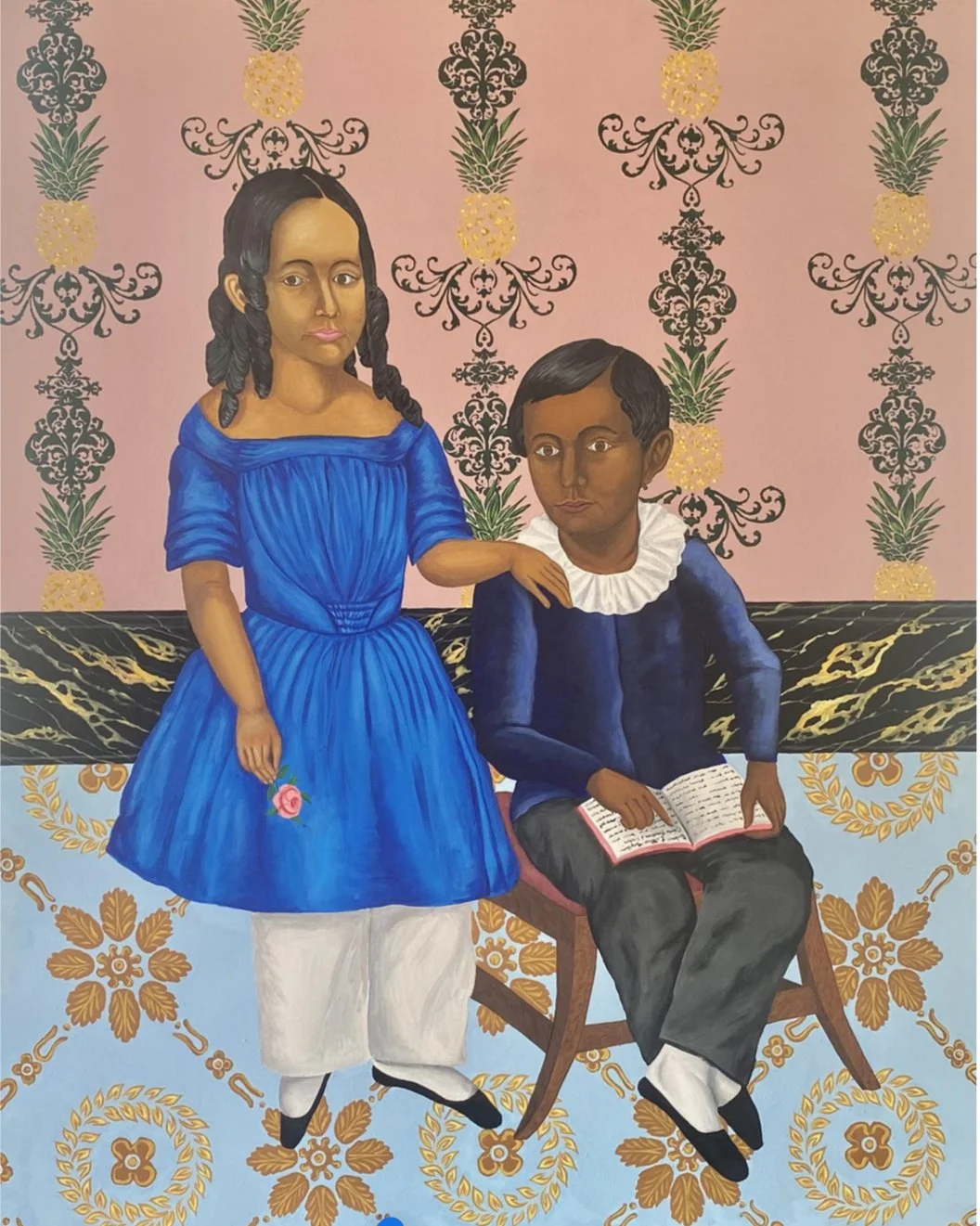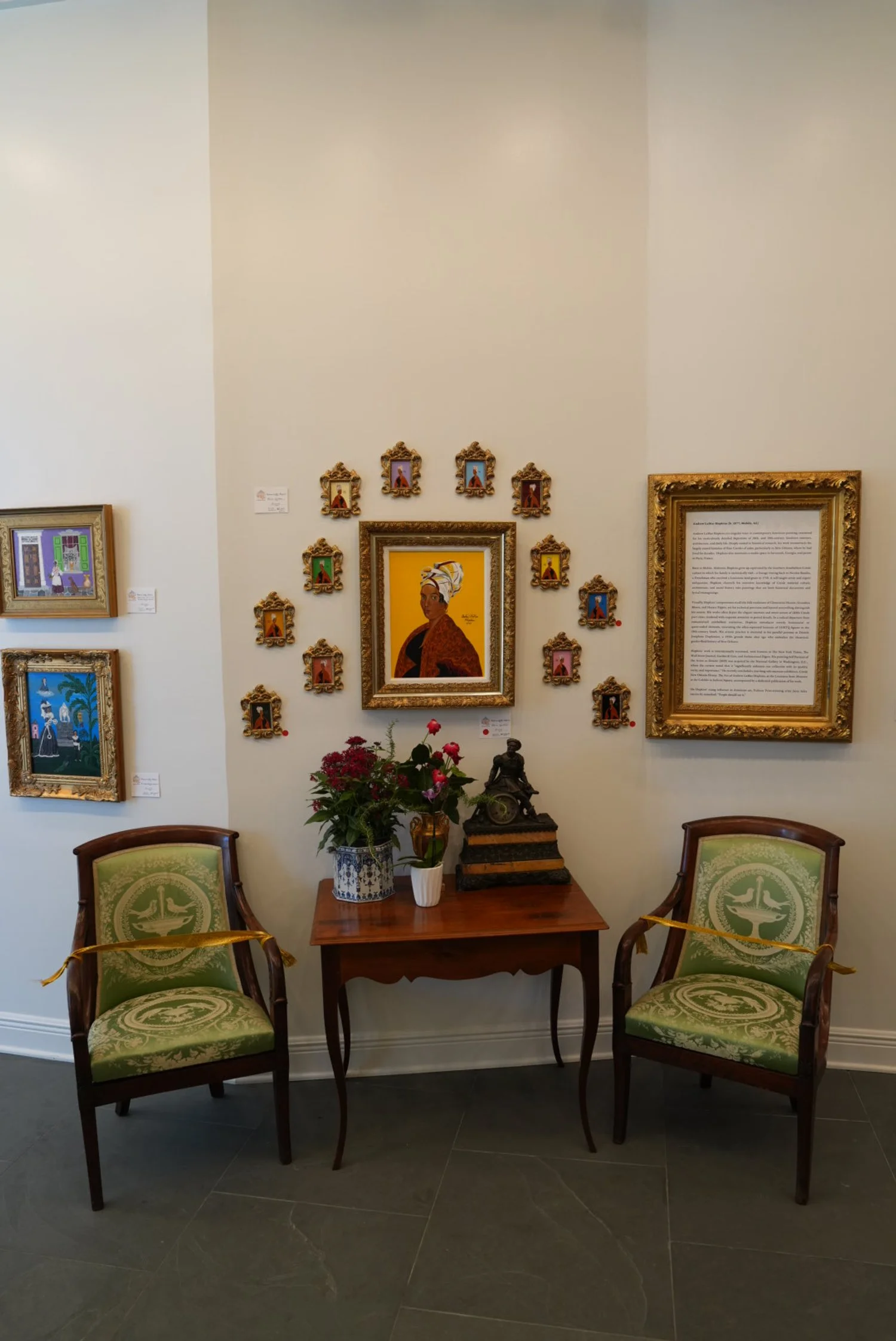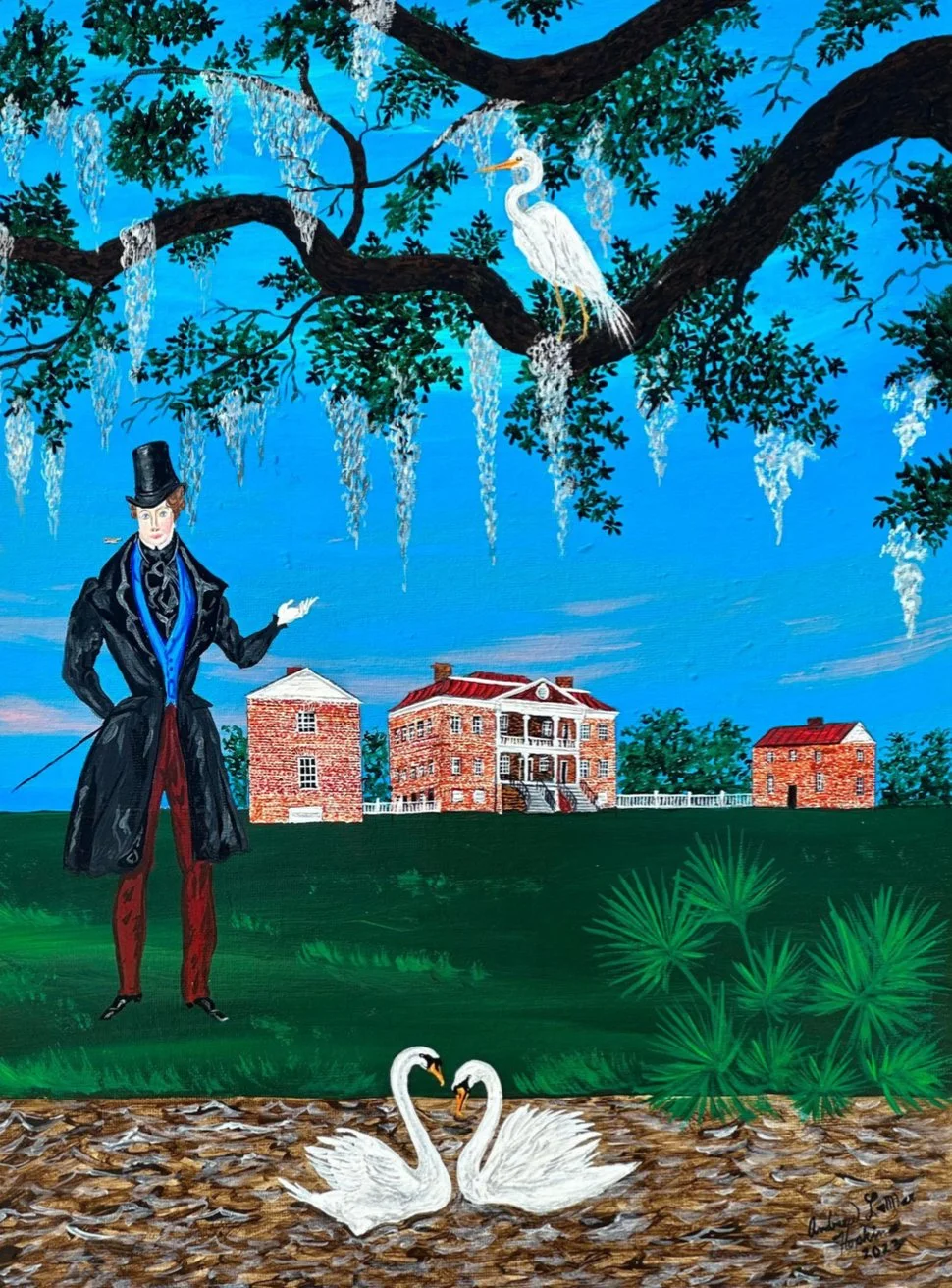

















Specializing in the finest SOUTHERN arT AND Appraisal
Andrew LaMar Hopkins (b. 1977, Mobile, AL)
Andrew LaMar Hopkins is a singular voice in contemporary American painting, renowned for his meticulously detailed depictions of 18th- and 19th-century Southern interiors, architecture, and daily life. Deeply rooted in historical research, his work reconstructs the largely erased histories of Free Creoles of color, particularly in New Orleans, where he had lived for decades. Hopkins also maintains a studio space in Savannah, Georgia, and paints in Paris, France.
Born in Mobile, Alabama, Hopkins grew up captivated by the Southern Antebellum Creole culture to which his family is intrinsically tied—a lineage tracing back to Nicolas Baudin, a Frenchman who received a Louisiana land grant in 1710. A self-taught artist and expert antiquarian, Hopkins channels his extensive knowledge of Creole material culture, architecture, and social history into paintings that are both historical documents and lyrical reimaginings.
Visually, Hopkins’ compositions recall the folk traditions of Clementine Hunter, Grandma Moses, and Horace Pippin, yet his technical precision and layered storytelling distinguish his oeuvre. His works often depict the elegant interiors and street scenes of 1830s Creole port cities, rendered with exquisite attention to period details. In a radical departure from romanticized antebellum narratives, Hopkins introduces overtly homosocial or queer-coded elements, excavating the often-repressed histories of LGBTQ figures in the 19th-century South. His artistic practice is mirrored in his parallel persona as Désirée Joséphine Duplantier, a 1950s grande dame alter ego who embodies the theatrical, gender-fluid history of New Orleans.
Hopkins’ work is internationally renowned, with features in The New York Times, The Wall Street Journal, Garden & Gun, and Architectural Digest. His painting Self Portrait of the Artist as Désirée (2019) was acquired by the National Gallery in Washington, D.C., where the curator noted that it “significantly enhances our collection with its quality, rarity, and importance.” He recently concluded a year-long solo museum exhibition, Creole New Orleans Honey: The Art of Andrew LaMar Hopkins, at the Louisiana State Museum at the Cabildo in Jackson Square, accompanied by a dedicated publication of his work.
On Hopkins’ rising influence in American art, Pulitzer Prize-winning critic Jerry Saltz succinctly remarked: “People should see it.”